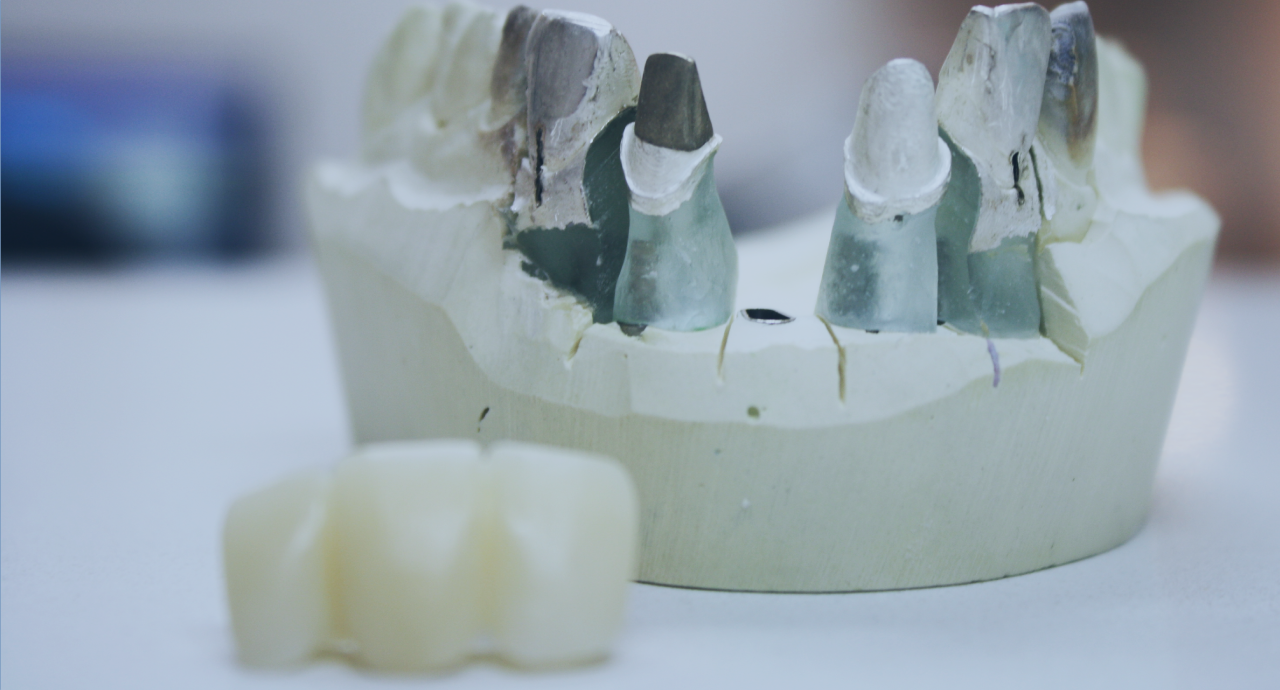
A bonded ceramic bridge is a fixed tooth replacement made from ceramic. It is usually bonded to a tooth next to the space left by a missing tooth. Usually it does not involve any changes or preparation of the tooth to be bonded too. It is usually used to replace teeth at the front of the mouth. A bonded bridge is not as strong as a conventional bridge which involves reduction of the adjacent teeth so that the bridge can be much thicker and stronger. A bonded bridge is, in many cases, an interim measure used in younger people where implants are not appropriate until an older more appropriate time. Bonded ceramic bridges have excellent aesthetics mimicking natural teeth almost perfectly. If the bite against the bonded bridge is managed correctly, they can last for up to 10 or more years. A series of images of bonded bridges is presented in the images gallery. Viewing this will give a much better understanding of the type of restoration described. The construction of these bridges has been made possible due to the improvements in dental ceramics. They have only been possible in the last 10 years. These bridges were constructed many years ago using dental metal alloy’s and ceramic. These bridges were problematic in that the aesthetics were badly affected by the metalwork. In addition to this, the old metal bridges did not bond very well to teeth and often were dislodged. The new dental ceramics available, bond exceptionally well to teeth and have high strength and excellent aesthetics.
What is the process for getting veneers?
Examination and Consultation
When assessing someone to see if they are suitable for a ceramic bridge, close attention is paid to the tooth to be replaced. Also, the nature of the way the teeth close together is important as the bonded bridge is attached to the back of the tooth next to the space. If a very deep bite exists, a bonded bridge may not be suitable. In addition to this, the space available for the missing tooth will influence the final aesthetics. If the space available is too wide or too small, it may need to be adjusted by either closing the spaces by adding filling material to the teeth or closing them with an orthodontist. If the teeth bite together with very heavy pressure on a ceramic bridge, it may not be suitable. This can be assessed by examining the teeth to assess how much previous wear is present. Bonded ceramic bridges also require more cleaning than normal teeth as they are joined or connected. If tooth cleaning is difficult, a bonded bridge may not be suitable. If a bonded bridge cannot be cleaned adequately it can result in excess decay in the teeth it is attached to. Inability to clean this may also result in infection in the gum around the bonded bridge. A normal examination would assess these issues.
The Procedure
Impressions of the teeth which the bridge will be attached too are taken in a very accurate crown and bridge impression material. This impression material is commonly silicone based and can take up to 5 minutes to set. A mould of the opposing teeth is taken along with a record of the way the teeth bite or fit together. Finally, records of the colours and shapes of the teeth are also taken.
Placing the Bond ceramic bridge.
This procedure involves fitting the bridge to the tooth next to the space. The bridge shape is adjusted so that it is an exact mirror image of the tooth on the other side of the mouth. This adjustment provides a perfectly symmetrical shape. Once the shape has been corrected, the dental technicians then assess the teeth to add the final colours. This addition of the final colours takes approximately 1 or 2 hours. The bridge is again assessed to check whether the colours match the adjacent teeth. If the colours are not perfect, the bridge is again changed and rechecked. If the colours are correct, the bridge is bonded to the tooth next to the space. Once the bridge is bonded, the bite is checked so that there are not heavy forces from the opposing teeth. Any adjustments are then polished.
.
Care
After preparation
Bonded bridges require more cleaning than natural teeth. The bridge is bonded or attached to one tooth. The space underneath this attachment will trap plaque and requires extra cleaning. Small brushes, tooth picks, or dental floss need to be used to keep this area clean and free from decay. This process of cleaning is demonstrated after the bridge is bonded in place. A review appointment is normally made approximately 1 or 2 weeks following attachment of the bridge. At this review appointment, we will check whether the bridge has been cleaned appropriately. If not, we give further advice in cleaning procedures. At this review appointment, we also check whether the aesthetics and appearance are correct. Finally, another assessment of the bite is made. This final part of the review appointment is possibly the most important part. If the bite is incorrect it can lead to the premature failure of the bridge. If the bite is correct, the bridge can last for an indeterminate period of time.


